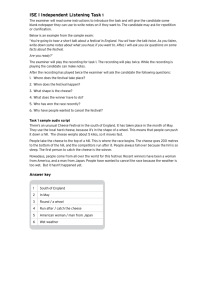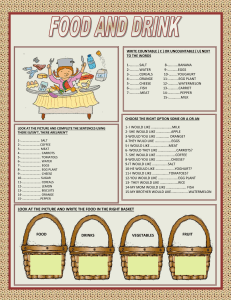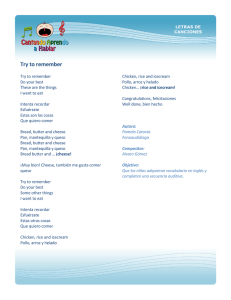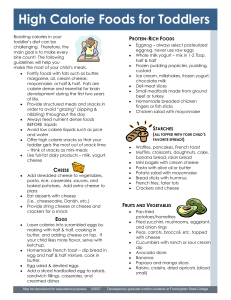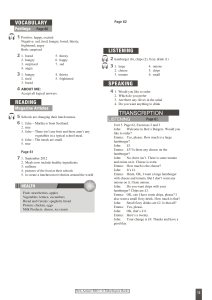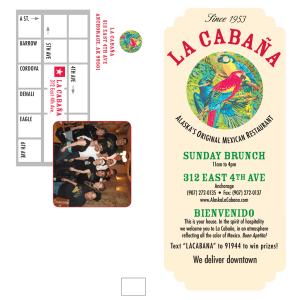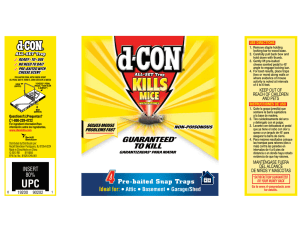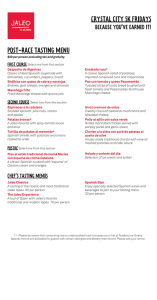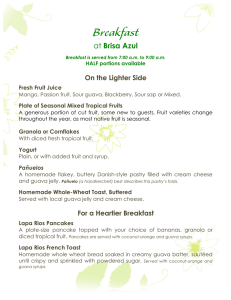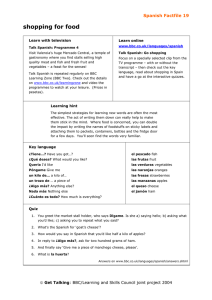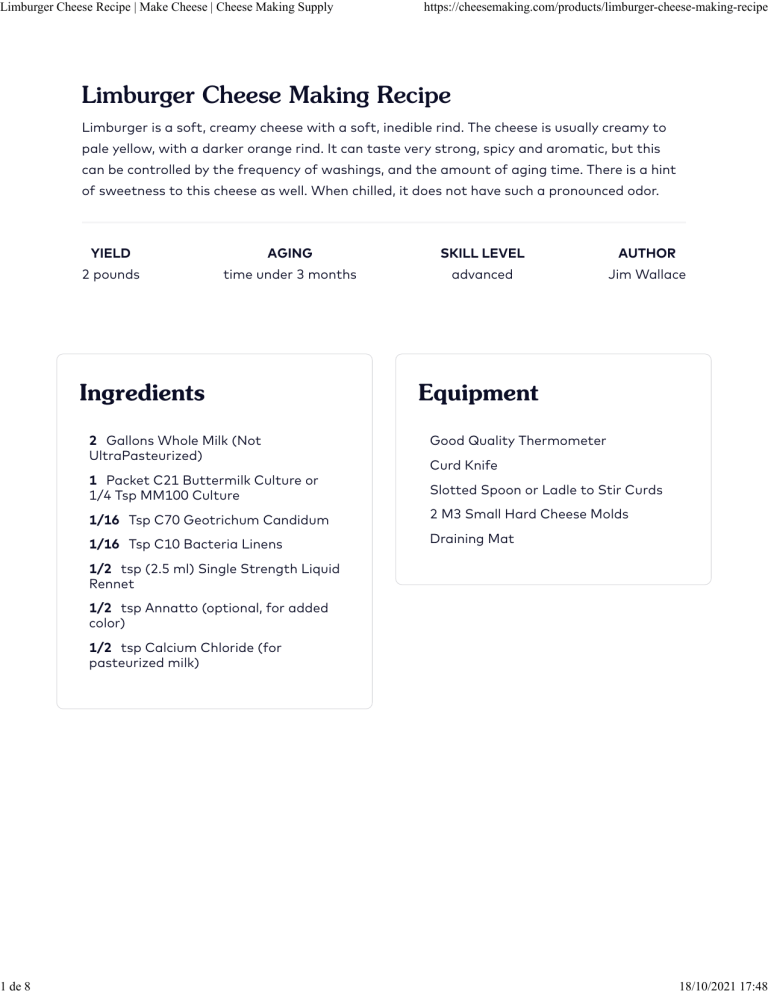
Limburger Cheese Recipe | Make Cheese | Cheese Making Supply 1 de 8 https://cheesemaking.com/products/limburger-cheese-making-recipe Limburger Cheese Making Recipe Limburger is a soft, creamy cheese with a soft, inedible rind. The cheese is usually creamy to pale yellow, with a darker orange rind. It can taste very strong, spicy and aromatic, but this can be controlled by the frequency of washings, and the amount of aging time. There is a hint of sweetness to this cheese as well. When chilled, it does not have such a pronounced odor. YIELD AGING SKILL LEVEL AUTHOR 2 pounds time under 3 months advanced Jim Wallace Ingredients 2 Gallons Whole Milk (Not UltraPasteurized) 1 Packet C21 Buttermilk Culture or 1/4 Tsp MM100 Culture Equipment Good Quality Thermometer Curd Knife Slotted Spoon or Ladle to Stir Curds 1/16 Tsp C70 Geotrichum Candidum 2 M3 Small Hard Cheese Molds 1/16 Tsp C10 Bacteria Linens Draining Mat 1/2 tsp (2.5 ml) Single Strength Liquid Rennet 1/2 tsp Annatto (optional, for added color) 1/2 tsp Calcium Chloride (for pasteurized milk) 18/10/2021 17:48 Limburger Cheese Recipe | Make Cheese | Cheese Making Supply 2 de 8 1 https://cheesemaking.com/products/limburger-cheese-making-recipe Acidify & Heat Milk Begin by heating the milk to 88-90F (32C). You do this by placing the milk in a pot or sink of very warm water. If you do this in a pot on the stove, make sure you heat the milk slowly and stir it well as it heats. Once the milk is at the proper temperature, the culture, 1/32 tsp Geotrichum Candidum, and 1/32 tsp Bacteria Linens can be added. To prevent the powder from caking and sinking in clumps, sprinkle the powder over the surface of the milk and then allow about 2 minutes for the powder to re-hydrate before stirring it in. The optional annatto and calcium chloride can also be added at this point. Once the cultures and other additions are added, allow the milk to ripen at this temperature for 30 minutes. This is warmer and for a shorter time than some other semi-soft cheeses but since the milk starts out with less ripening time, the warmth will help the rennet form a curd. 2 Coagulate with Rennet Once the milk has been ripened fully, add about 1/2 tsp (2.5ml) of single strength liquid rennet. The milk now needs to set quietly for 45-60 minutes while the culture works and the rennet coagulates the curd. The thermal mass of this milk should keep it warm during this period. It should be kept at the proper temperature during this time. 18/10/2021 17:48 Limburger Cheese Recipe | Make Cheese | Cheese Making Supply 3 de 8 3 https://cheesemaking.com/products/limburger-cheese-making-recipe Cut Curds & Release Whey Once a firm curd has been formed (if still too soft, allow it to rest another 15 minutes) it is time to cut the curds and release the whey. The cutting needs to be slow and steady and the curd size should be about 1/2-5/8 inch in size. Here, I use a whisk with wires I have expanded but you can use a knife for the vertical cuts and a long spoon to complete the horizontal cuts. Take about 5 minutes to complete this step. If the curds are too small the cheese will become too dry to ripen properly. After the cut is complete, the curds should be stirred very slowly, so as not to break them for another 15 minutes. 4 Cook the Curds The curd now needs to be scalded to about 92F very slowly over 5-10 minutes and then further stirred for another 15-20 minutes until the final firmness is achieved. This is the point that I always stress as "critical moisture" in my workshops because: ◦ For a high moisture cheese, if too much moisture is removed, the cheese will be too dry to ripen well. ◦ But if not dry enough, it will carry excess moisture (lactose) into the aging room and will cause late acid development on the aging shelf resulting in a harsh and over-acid cheese. What you will be looking for here is the final curd mass. When removed from the vat and pressed lightly in the hand, it will just barely be sticking together when a little thumb pressure is applied. This may take you a few tries to get but is a time where close observations need to be made and good notes kept. When this point is reached, the curds can be allowed to settle under the whey and the whey ladled off, leaving the curd mass and a little whey covering it in the bottom of the vat. 18/10/2021 17:48 Limburger Cheese Recipe | Make Cheese | Cheese Making Supply 4 de 8 5 https://cheesemaking.com/products/limburger-cheese-making-recipe Form Cheese The curds can now be transferred with the remaining whey directly to the sanitized molds placed on draining mats, as shown below. As soon as all of the curd is transferred to the molds, another draining mat is placed on top and the form is turned with the draining mats to keep the curd mass contained. No press or weight is needed because we are making a high moisture cheese. The curd mass will be all the weight that is needed to consolidate the curd BUT the cheese must be turned ASAP after the curd is transferred into the mold and then turned several more times in the next hour. By this time the surface should be very smooth and consolidated. During the next several hours turn them hourly. The whey will continue to drain and the curds will settle in the molds as seen in the photos above. The culture is still producing acid, therefore it is important to keep them warm at 72-78F during this period. Allow this draining and acid production to continue until the next morning (about 14-18 hours in the molds). The forms can be removed and the cheese will be about 11.25-1.5 inches in height. They are now ready for salting. 18/10/2021 17:48 Limburger Cheese Recipe | Make Cheese | Cheese Making Supply 5 de 8 6 https://cheesemaking.com/products/limburger-cheese-making-recipe Salting You will need a saturated brine prepared for salting this cheese, find all of the details you need on brining here. A simple brine formula is: ◦ 1 gallon of water ◦ 2.25 lbs of salt ◦ 1 Tbs calcium chloride ◦ 1 tsp white vinegar ◦ Bring the brine and cheese to 50-55°F before using The cheese now needs to be set in the brine for about 1.5 hours. The cheese will float above the brine surface, so sprinkle another teaspoon of salt on the top surface of the cheese. Flip the cheese and re-salt the surface about half way through the brine period. At the end of the brine bath, wipe the surface BUT DO NOT allow the cheese surface to dry (as in many other cheeses post brining) because we want a very high moisture during aging. 7 Aging Prep Up until this point we have been following a pretty normal profile for a semi-soft cheese. Now we will begin the adventure into "stinky cheese" territory (or not depending on how brave you are). The key here is: ◦ prepare a moist cheese body ◦ provide it with a high moisture aging environment 18/10/2021 17:48 Limburger Cheese Recipe | Make Cheese | Cheese Making Supply 6 de 8 https://cheesemaking.com/products/limburger-cheese-making-recipe ◦ keep it moist until the red rind begins to develop Once the cheese is salted and dried of surface moisture, it needs to go into a plastic covered box to hold a high moisture level of about 95% and initially a temperature of 58-62F (higher than most other aging temps). The photo shows the container circled that I use for this cheese. You can see several other containers as well that I use in my cave here. Ricki does not sell these but they are readily available in many stores. I also make sure I keep a draining mat under each cheese to allow for a little circulation of air and moisture release. I also turn the cheese every day, change the mats when they become too damp and wipe any excess moisture from the enclosure. I usually make this cheese during the summer when my aging room is a few degrees warmer. 8 Washing the Rind Now, for the next 3-4 days, there is nothing to do but wait and turn the cheese once daily while the salt penetrates the curd and the cheese surface changes to a slippery surface caused by natural yeast picked up during sitting and handling to this point. These yeast will begin preparing the surface by decreasing its acid. You have already added the small amount of geotrichum and B.linens to your milk so they are also present and ready to go as the cheese surface changes. You are now at the point where Limburger becomes LIMBURGER (and this is the point where the bravery comes in). It is time to begin the washing phase. This is the first step in producing a milder vs aromatic 18/10/2021 17:48 Limburger Cheese Recipe | Make Cheese | Cheese Making Supply 7 de 8 https://cheesemaking.com/products/limburger-cheese-making-recipe cheese and is determined by how much you wash that initial slippery (slime) coat off. You begin by making a light brine with about a cup of water and a good tablespoon of salt . If you want a more aromatic surface add about 1/32 tsp of the B.linens to this. Now using a cloth or soft brush (the brush removes more of the initial surface) If you want a milder cheese, wash as much of this surface as possible off but if you want an aromatic and strong flavored cheese just rub it lightly with the light brine solution. Next the cheese are moistened daily to keep them hydrated and then wiped/brushed with the light brine 2-3 times during the first 7-10 days. NOTE: the surface should never become "swampy" or "gooey" with free moisture nor should it become dry and flakey. The ideal surface should feel moist and perhaps a bit "tacky". Following this they need to be kept cooler at 40-50F to allow a slow but steady ripening of the cheese body. Too high a temp will cause the cheese to ripen unevenly. Continue to maintain the higher moisture to keep from drying out. If the surface becomes too dry, it can be moistened with a damp cloth. Wrapping the cheese with our washed rind papers will help to preserve the moisture at this point 9 Aging for Character The final aging time will really depend on your "Bravery" factor and what you want in the final cheese. ◦ Less than 1 month you will find it to be firm, crumbly, and salty with a slight acid flavor. Yes, not much Limburger here yet. ◦ 1.5 months the cheese is a Young Limburger and is still firm with crumbly center and soft outer edge as the bacteria works from edge to center and still has an acidic flavor. ◦ 1.5-2 months the cheese is “à point” (in between) and is soft almost to center, and the flavor is becoming somewhat sweeter with a slight earthy flavor. Approaching Limburger country now. ◦ 2-3 months the cheese becomes more soft and spreadable, and the cheese is sweet strong flavor approaching "barny" or "farm-like" (trying to be nice here). You are now in Limburger country. ◦ 3+ months the cheese is only for the brave with an intense very strong and pungent 18/10/2021 17:48 Limburger Cheese Recipe | Make Cheese | Cheese Making Supply 8 de 8 https://cheesemaking.com/products/limburger-cheese-making-recipe aroma/flavor. Bitterness may now be a factor at this age. ▪ You have now entered the Capitol of Limburger country and you find yourself alone. ▪ Your friends can be seen off in the distance holding their noses and pointing at you. This will also depend on how moist the cheese is made and how you maintain the surface as indicated above. 18/10/2021 17:48
